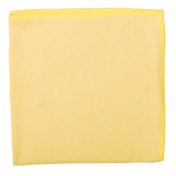Tiles are laid in every house and apartment, but many people don't know what tiles are exactly and also wonder how best to care for them. Before you start cleaning them, you should know what different types of tiles exist.
The different types of tiles
Tiles are roughly divided into stoneware, earthenware and porcelain stoneware . The three types of tiles mentioned are all made of ceramic and essentially only differ in the recipe, preparation of the raw materials and the firing temperature.
What is earthenware?
The firing temperature of earthenware is the lowest and lies between 950°C and 1150°C. Due to the low firing temperature, the tiles do not melt completely; you can imagine the tiles as porous shards with air pockets. Due to the low firing temperature, earthenware is neither particularly resilient nor frost-resistant. It also has the highest water absorption (up to 15% of its own weight). Glazed earthenware is most commonly used as wall tiles in the kitchen or bathroom. The glaze makes them waterproof, acid-resistant and protects against stains and dirt.
What is stoneware?
Stoneware is fired between 1150°C and 1300°C. The higher firing temperature means the pores are finer and therefore more resilient and frost-proof than earthenware. Water absorption is significantly lower (less than 3%) . They can therefore be used indoors and outdoors as floor or wall tiles. Stoneware is available in glazed and unglazed versions.
What is porcelain stoneware?
Now we come to porcelain stoneware. This consists of even finer pores than stoneware . The ingredients are ground much finer and pressed together under high pressure during processing. The firing temperature here is also very high. Due to its dense structure, porcelain stoneware absorbs the least amount of water, only around 0.5% . Other properties include its very high resistance and durability. This is why porcelain stoneware can be used indoors and outdoors, as wall, floor or facade tiles.
The right care right from the start
Now let's get to the cleaning tips : Many people don't know how important it is to take care of the tiles properly. If the porcelain stoneware is not taken care of properly, it can lead to unsightly streaks and deposits (caused by limescale). After laying the tiles, it is advisable to carry out an initial cleaning to remove cement residue or other building dirt, for example. We recommend a cement residue remover. The tiles can then be impregnated to protect them from dirt.
The following should be taken into account for maintenance cleaning:
- Use surfactant-free products, as surfactants mix with the dirt or oil, then spread over the tiles and cause streaks
- Polished porcelain stoneware has open pores, which means that care should be taken to clean it regularly with a slightly acidic cleaner , for example to remove limescale residues.
- Cleaners containing wax or grease should be avoided as they leave an unsightly layer.
- A microfibre cloth or microfibre mop is particularly suitable for cleaning, as the fine fibres can penetrate into the pores (capillaries), in contrast to a cotton mop , which only cleans the surface.
Follow these tips and your tiles will remain in full splendor for a long time.



